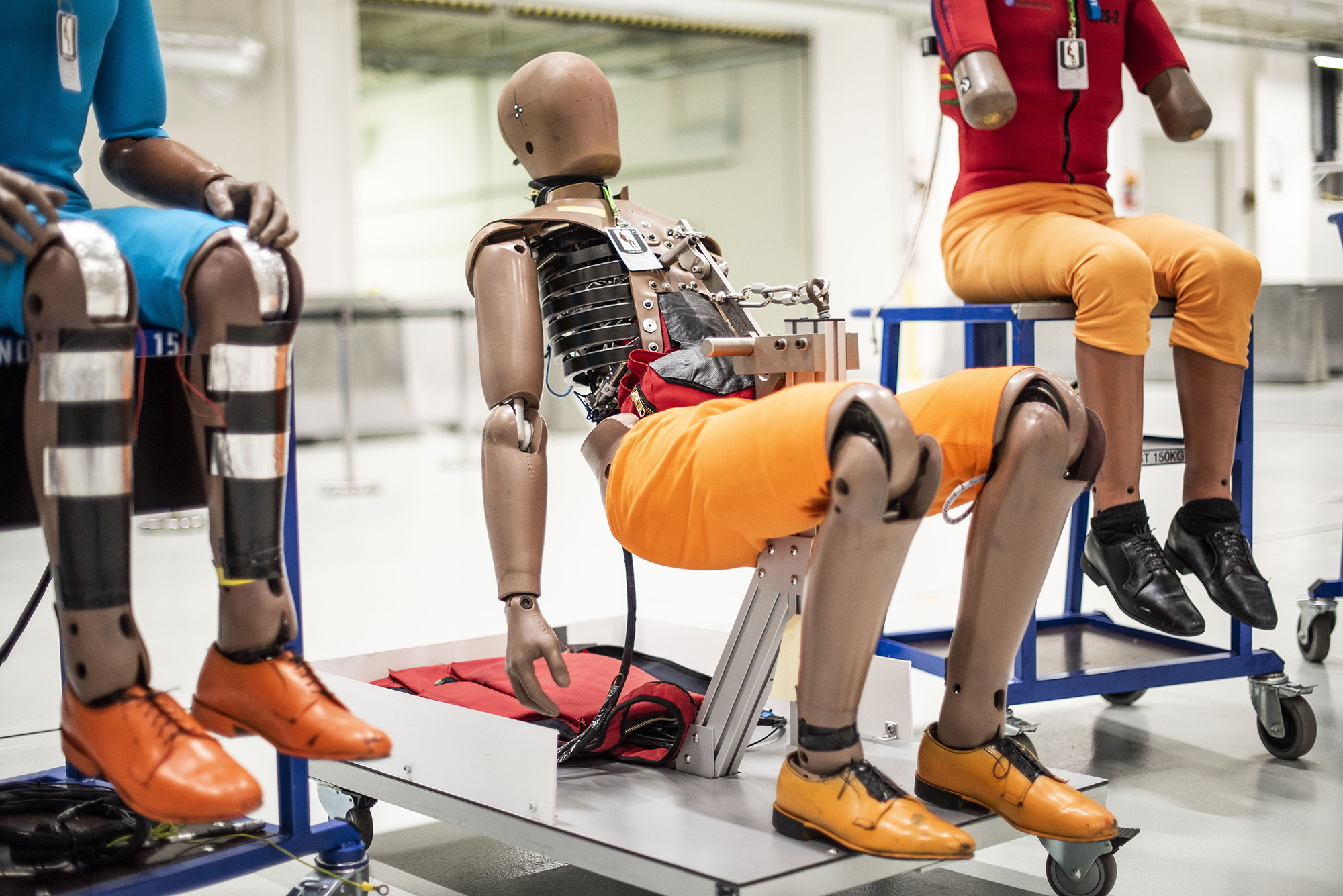50% male, 5% female
In addition, a slightly different dummy is suitable for each type of test. These are specially designed to best simulate the behaviour of the human body for a particular test. “For frontal impacts, dummies such as Hybrid III or Thor are used, while for lateral impacts we use EuroSID II and WorldSID dummies,” Domkář explains.
 Inflatable dummies are also used in car development tests.
Inflatable dummies are also used in car development tests.
Dummies often have a percentage marking, for example 50% male. All that means, though, is that this is an average male in terms of height and weight. For women, the most common dummy is “5% female”, which means that only 5% of women are physically smaller than the dummy.
As Jan Domkář explains, only standardised dummies are used in the tests. This is based on the requirement of homologation tests and more stringent consumer tests carried out according to the EuroNCAP methodology, for example. The same dummies are used in both official tests and internal ones, which are performed by the company to verify safety during the development of a car before it is confirmed by official testing.






 Jan Domkář
Jan Domkář














